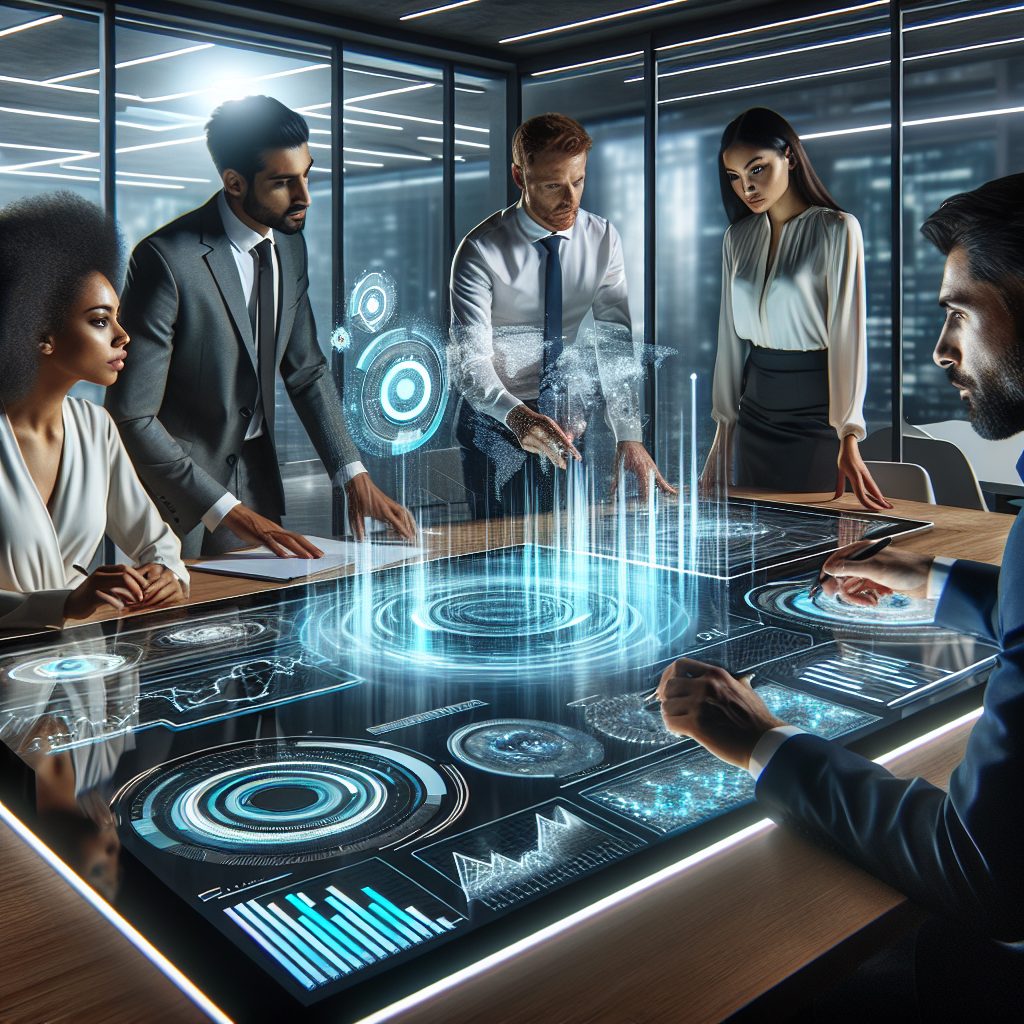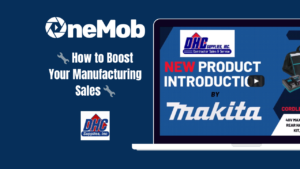Understanding Sales Empowerment
Sales empowerment is a pivotal strategy that goes beyond mere enablement; it’s about granting sales teams not only the tools and resources they need but also the autonomy and trust to make decisions that best serve the customer and the business. Unlike traditional sales enablement, which focuses on providing salespeople with the necessary training and materials to sell effectively, empowerment dives deeper. It fosters an environment where sales professionals are encouraged to leverage their insights, intuition, and expertise to navigate sales processes.
The Importance of Empowering Your Sales Team
Empowering your sales team is not just a morale booster; it’s a strategic move. Teams that feel empowered are known to be more innovative, motivated, and engaged. This empowerment leads to higher job satisfaction, reduced turnover, and, most importantly, enhanced sales performance. An empowered salesforce is more adept at handling customer queries, overcoming objections, and closing deals because they operate in an environment that values their judgment and capabilities.
Examples of Sales Empowerment Strategies
Implementing sales empowerment strategies can take many forms, but here are a few impactful methods:
- Decentralizing Decision-Making: Allowing sales representatives more autonomy in deal-making and strategy development.
- Investing in Advanced Sales Tools: Providing access to CRM systems, social selling tools, and data analytics platforms to enable informed decision-making.
- Fostering a Culture of Continuous Learning: Encouraging the pursuit of knowledge and skills that can help sales reps navigate complex sales landscapes effectively.

It’s also crucial to highlight the role of feedback and recognition in sales empowerment. Regular, constructive feedback helps sales representatives understand their strengths and areas for improvement. Meanwhile, recognizing their efforts and achievements fosters a positive work environment and bolsters their motivation to excel.
Moreover, sales empowerment is significantly enhanced by tailoring empowerment strategies to the individual needs of the sales representatives. Understanding that each salesperson has unique strengths, weaknesses, and learning styles is key to crafting an empowerment strategy that maximizes their potential.
Exploring Sales Enablement
Sales enablement is a strategic approach designed to provide sales teams with the resources they need to effectively engage buyers. These resources can include content, tools, knowledge, and information to sell more effectively. The primary goal of sales enablement is to ensure that every sales interaction is impactful and moves the buyer through the sales process.
Key Components of a Successful Sales Enablement Strategy
A successful sales enablement strategy involves several key components:
- Content: High-quality, relevant content that can help sales teams educate and engage prospects. This includes sales scripts, product sheets, case studies, and more.
- Training and Coaching: Regular training and coaching sessions to equip sales teams with the latest best practices and strategies.
- Tools and Technology: The right mix of tools and technology to streamline the sales process and make information readily accessible.
- Collaboration: Facilitation of effective communication and collaboration between sales, marketing, and other relevant departments.
The Role of Technology in Sales Enablement
Technology plays a pivotal role in sales enablement by streamlining sales processes and making information more accessible. Customer Relationship Management (CRM) systems, sales intelligence tools, and content management systems are examples of technology that can significantly impact sales enablement. These tools help sales teams to track prospect interactions, access relevant content quickly, and maintain engagement with potential buyers efficiently.
Furthermore, advanced analytics and artificial intelligence (AI) are becoming increasingly important in sales enablement. They can provide insights into buyer behavior, predict sales trends, and recommend the next best action for sales representatives. This level of insight helps sales teams to be more strategic and personalized in their outreach, ultimately leading to improved sales outcomes.
In conclusion, while sales empowerment focuses on empowering the individual sales representative, sales enablement takes a broader approach. It involves equipping the entire sales organization with the tools, content, training, and technology needed to effectively engage with buyers and close more deals. Both are crucial for a high-performing sales team, but sales enablement provides the structured framework and resources necessary for sales empowerment to be successfully implemented.
Sales Empowerment vs Sales Enablement
Understanding the distinction between sales empowerment and sales enablement is crucial for crafting a high-performing sales strategy. While both concepts aim to enhance the effectiveness of sales teams, they approach this goal from different angles.
Key Differences Between Empowerment and Enablement
Sales enablement focuses on providing sales teams with the tools, resources, and training necessary to sell more effectively. It’s about ensuring that sales representatives have everything they need to engage with prospects successfully. On the other hand, sales empowerment is about giving sales teams the autonomy to make decisions, take risks, and innovate in their approach to selling. Empowerment emphasizes trust and flexibility, allowing sales professionals to utilize their skills and intuition to navigate sales processes.

While enablement is about “equipping”, empowerment is about “liberating”. Enablement provides the map and the tools for the journey, whereas empowerment encourages exploring new paths and even venturing off the map altogether.
How Empowerment and Enablement Complement Each Other
Though distinct, sales empowerment and enablement are far from mutually exclusive. In fact, they complement each other beautifully. Enablement sets the foundation with the necessary tools and knowledge, while empowerment encourages innovation and personal responsibility within that framework. For instance, a well-enabled salesperson equipped with the latest CRM software (a result of enablement) can be empowered through autonomy in their use of the tool to personalize customer interactions.
Moreover, empowerment can often lead to a more profound and intrinsic motivation among sales teams. When sales professionals feel trusted and valued, their engagement and commitment to their roles increase. This intrinsic motivation, fueled by empowerment, can drive sales teams to make the most of their enablement resources, leading to even greater sales success.
Integrating Both Approaches for Sales Success
For organizations looking to maximize their sales potential, integrating both sales enablement and empowerment into their strategy is key. This means not only investing in the right tools and training but also fostering a culture that values autonomy, innovation, and risk-taking. Sales leaders should strive to clearly communicate the organization’s goals and values, while also giving sales teams the freedom to navigate the path to success in their unique way. Recognizing and rewarding creativity, flexibility, and effort is also crucial in maintaining a balance between enablement and empowerment.
Ultimately, the most successful sales strategies are those that recognize the value of both enablement and empowerment, leveraging each to complement the other. By doing so, organizations can create a dynamic, motivated sales force capable of achieving exceptional results.
Implementing Sales Empowerment and Enablement
In the journey of integrating sales empowerment and enablement, understanding the steps to implement an effective strategy is crucial. While sales empowerment focuses on giving sales teams the authority and confidence to make decisions, sales enablement provides them with the tools, resources, and training needed to succeed. Let’s dive into how to implement these strategies efficiently.
Steps to Implement a Sales Empowerment Strategy
Implementing a sales empowerment strategy begins with trust and communication. Empowering your sales team starts with trusting them to make decisions that can benefit the business. This includes:
- Providing autonomy in handling sales situations
- Encouraging innovation and creative thinking in sales approaches
- Offering opportunities for professional development
Empowerment also means creating a culture where mistakes are seen as learning opportunities, fostering an environment where sales reps feel confident to take initiative.
Building an Effective Sales Enablement Framework
An effective sales enablement framework is designed to provide the sales team with the resources they need to perform at their best. This includes:
- Developing a comprehensive onboarding program that covers product knowledge, market insights, and sales methodologies
- Ensuring easy access to sales materials, such as case studies, product sheets, and competitor analysis
- Implementing regular training sessions to keep the sales team updated on the latest trends and techniques
It’s essential to tailor the sales enablement framework to the specific needs of your sales team, considering factors like market dynamics and customer profiles.
Measuring the Impact of Empowerment and Enablement on Sales Performance
To gauge the effectiveness of sales empowerment and enablement strategies, it’s vital to measure their impact on sales performance. Key metrics include:
- Sales cycle length: Shorter sales cycles may indicate more effective sales processes and better customer engagement.
- Win rates: An increase in win rates can signify that sales reps are better equipped and empowered to close deals.
- Employee satisfaction: Higher satisfaction levels among the sales team can lead to increased motivation and performance.
Regularly reviewing these metrics helps in identifying areas of improvement and adjusting strategies accordingly to maximize sales success.
By carefully implementing sales empowerment and enablement strategies, organizations can create a dynamic sales environment that not only boosts sales performance but also enhances employee satisfaction and customer relationships.
Real-World Examples of Successful Sales Empowerment
In the realm of sales, empowerment proves to be a game-changer. Take, for instance, the case of a leading technology firm that shifted its focus towards empowering its sales team with autonomy and decision-making capabilities. This approach led to a remarkable 20% increase in sales within a year. Sales representatives, equipped with the right tools and confidence, were able to tailor solutions to customer needs more effectively, showcasing the power of empowerment in action.
Companies that Have Mastered Sales Enablement
On the flip side, sales enablement focuses on providing sales teams with the necessary resources, tools, and training to sell more effectively. A standout example is a global software company that implemented a comprehensive sales enablement platform. This initiative resulted in a 30% reduction in the sales cycle and a 25% increase in deal closure rate. By meticulously curating content and streamlining the sales process, the company set a benchmark in sales enablement excellence.

Lessons Learned from Sales Empowerment and Enablement Initiatives
Key lessons emerge from these initiatives. First and foremost, the alignment between sales and marketing is crucial for both empowerment and enablement. Companies that succeeded in these areas fostered a culture of collaboration, where sales and marketing teams worked closely to create a seamless customer journey. Moreover, continuous training and development stand out as pivotal. For empowerment, it ensures sales reps are confident and well-versed in navigating customer interactions. For enablement, it guarantees that reps are proficient in utilizing tools and resources at their disposal. Finally, leveraging data and analytics to refine strategies and personalize customer engagements has been a common thread among successful companies, highlighting the importance of a data-driven approach in today’s sales landscape.
Summarizing the key takeaways from our exploration of sales empowerment and enablement, we’ve seen firsthand through various case studies how companies have successfully harnessed these strategies for remarkable sales achievements. Sales empowerment, with its focus on giving sales reps autonomy and confidence, complements sales enablement’s provision of tools, resources, and training. This synergy not only boosts sales performance but also fosters a culture of continuous learning and improvement.
Looking towards the future trends in sales empowerment and enablement, we anticipate a greater reliance on technology-driven solutions. Artificial intelligence and machine learning are set to play pivotal roles in personalizing sales training and development, while predictive analytics will enhance decision-making processes. Furthermore, the integration of virtual and augmented reality into sales enablement tools will provide immersive training experiences, bridging the gap between knowledge and practice in unprecedented ways.
As we contemplate the balance between empowerment and enablement for sales success, it’s clear that neither can stand alone. Empowerment without the proper enablement tools is like setting sail without a compass, while enablement without empowerment may lead to underutilization of resources. The ideal strategy involves a harmonious blend of both, tailored to the unique needs of your sales team. Adopting a flexible, adaptive approach will not only prepare your team for the challenges of today’s sales landscape but also equip them for the innovations of tomorrow. Ultimately, the success of your sales strategy hinges on your ability to empower your sales force with the right tools, knowledge, and confidence to achieve their full potential.







